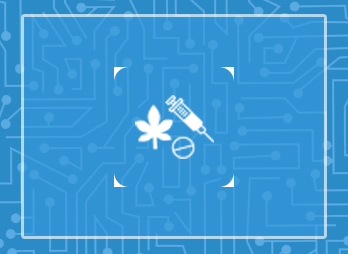Attention Deficit Hyperactivity Disorder (ADHD)
ADHD is one of the most common childhood disorders and can continue through adolescence and adulthood. It is currently recognized as a disorder with behavioural, emotional, educational and cognitive aspects that impact on the life of a child with ADHD every day of the year. ADHD children face two major problems at school are poor scholastic performance and poor peer relations. Even bright and gifted children with ADHD may get poor grades because of their inability to concentrate and complete the tasks. ADHD also impairs memory. Many children with the disorder repeat a class or drop out of school.
ADHD symptoms can appear between the ages of 3 and 6 and can continue through adolescence and adulthood. It is more common in males than females. Females with ADHD are more likely to have problems primarily with inattention. Other conditions, such as learning disabilities, anxiety disorder, conduct disorder, depression, and substance abuse, are common in people with ADHD.
Signs and Symptoms
Inattention and hyperactivity-impulsivity are the key behaviours of ADHD. Some children with ADHD only have problems with one of the behaviours, while others have both inattention and hyperactivity-impulsivity. Most children have the combined type of ADHD. In preschool the most common ADHD symptom is hyperactivity.
Inattention: –
Children with inattention may often:
- Fails to pay attention to tasks or play, including conversations, lectures, or lengthy reading.
- Difficulty in sustaining attention on tasks or play activities.
- Not seem to listen what is being said to him/her.
- Not follow through our instructions and fails to do schoolwork, chores and duties.
- Difficulty in organizing tasks and activities, such as what to do in sequence, keeping materials and belongings in order, having messy work and poor time management, and failing to meet deadlines.
- Avoid or dislike tasks that require sustained mental effort, such as schoolwork or homework, preparing reports, completing forms or reviewing lengthy papers.
- Lose things necessary for tasks or activities, such as school supplies, pencils, books, tools, wallets, keys, paperwork, eyeglasses, and cell phones.
- Easily distracted by unrelated thoughts or stimuli.
Hyperactivity-Impulsivity
Children with hyperactivity-impulsivity may often:
- Fidget and squirm in their seats.
- Leaves seat in classroom or in either situation when he is expected to be seated.
- Run or climb excessively in situations where it is inappropriate.
- Be unable to play or engage in hobbies quietly.
- Be constantly in motion or “on the go,” or act as if “driven by a motor”.
- Talk nonstop.
- Blurt out an answer before a question has been completed.
- Have difficulty in waiting in queues.
- Interrupt or intrude on others, for example in conversations, games, or activities.
Causes of ADHD
No one knows what causes ADHD. Like many other illnesses, a number of factors can contribute to ADHD, such as:
- Genes
- Lack of discipline
- Conflict between parents
- Parental neglect
- Sibling rivalry
- Exposure to environmental toxins during pregnancy
- Low birth weight
- Brain injuries
- Birth complications
Treatment
The most effective way to treat ADHD is a combination of following approaches.
Special Education:
A student with ADHD may require the support of a special educator in order to fully access the curriculum. The special educator may work as either a resource room teacher or in-class support teacher.
Behaviour Therapy:
Along with the academic support children with ADHD requires strategies for modifying undesirable behaviours. Positive and negative reinforcement, extinction, Schedules of reinforcement, modelling, shaping, time-out, response cost, and token reinforcement are commonly used techniques to treat ADHD. It enhances self-esteem and increases motivation in children.
Medication:
ADHD medication may help to improve the ability to concentrate, control impulses, plan ahead and follow through with tasks.
Tips for parents:
- Seek professional evaluation and treatment early.
- Have consistent and reasonable expectations of your child.
- Give the child clear directions and break up assignments into some small simple tasks.
- Set up an effective discipline system.
- Create a fixed routine and structure the day for your child.
- Identify your child’s strengths and build on them. Children with ADHD are often creative, very energetic and have a high IQ.
- Try to provide a quiet distraction-free environment for your child to study or play in.
- Channelize your child’s energies in constructive physical activities.
- Be sure to praise your child for his or her efforts, not just the outcome.
- Tell your child that you love and support him or her unconditionally.









